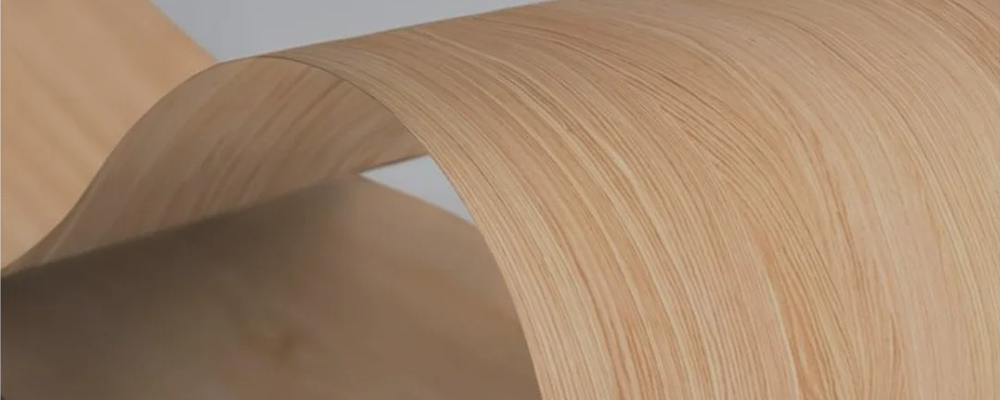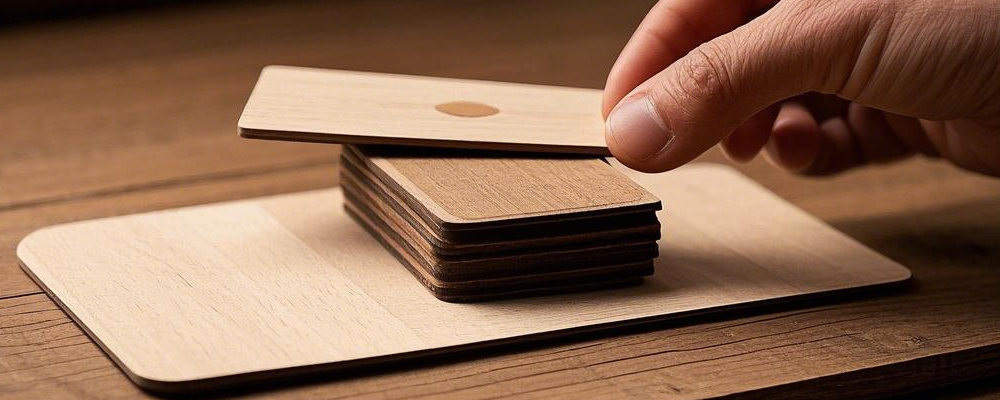The process of transforming wood into thin wooden sheets (used for products like wooden cards) is a delicate procedure involving multiple steps and specialized equipment. Below is a detailed breakdown of the processing workflow:
1. Wood Selection
- Material Selection: High-quality wood with uniform grain, such as bamboo, walnut, maple, or cherry, is chosen. The wood should be free of cracks, knots, or other defects.
- Drying Treatment: The wood is dried to reduce its moisture content (typically to 8%-12%) to prevent warping or cracking during subsequent processing.
2. Cutting into Blanks
- Sawing: The dried wood is cut into blanks (usually rectangular or square) slightly larger than the final required dimensions of the thin wooden sheets.
- Trimming: The blanks are trimmed to ensure flat surfaces and neat edges.
3. Planing and Sanding
- Planing: A planer or surface planer is used to flatten the surfaces of the blanks, ensuring both sides are smooth and of uniform thickness.
- Sanding: A sander or manual sanding tools are used to finely sand the wood surface, removing burrs and uneven areas to achieve a smooth finish.
4. Slicing
- Rotary Cutting or Slicing:
- Rotary Cutting: The wood is mounted on a rotary cutting machine, where it is rotated and sliced into continuous thin sheets. This method is suitable for producing very thin sheets.
- Slicing: The wood is fixed on a slicing machine, and blades cut it into thin sheets. This method is ideal for producing sheets with beautiful grain patterns.
- Thickness Control: The thickness of the slices is adjusted according to requirements, typically ranging from 0.5 mm to 2 mm for wooden cards.
5. Drying and Shaping
- Secondary Drying: The sliced thin wooden sheets are dried again to remove moisture generated during cutting and to prevent deformation.
- Flattening: A hot press or cold press is used to flatten the sheets, ensuring they are smooth and free of warping.
6. Surface Treatment
- Coating: Depending on requirements, the thin wooden sheets are treated with eco-friendly varnish, plant-based oils, or wax to enhance durability and aesthetics.
- Polishing: The treated sheets are polished to achieve a smoother surface and better tactile feel.
7. Cutting to Final Dimensions
- Trimming: The thin wooden sheets are cut into standard sizes (e.g., credit card size: 85.6 mm x 54 mm) for making wooden cards.
- Edge Treatment: The edges of the cut wooden cards are chamfered or sanded to ensure a comfortable feel and reduce wear.
8. Quality Inspection
- Visual Inspection: Each thin wooden sheet is checked for surface flaws and aesthetic grain patterns.
- Thickness Measurement: Tools are used to ensure the thickness of the sheets is uniform.
- Functional Testing: If the sheets are intended for functional uses like embedding RFID chips, performance tests are conducted to ensure stability.
9. Further Processing
- Chip Embedding: For applications like wooden hotel key cards or digital business cards, RFID or NFC chips can be embedded into the thin wooden sheets.
- Laser Engraving: Based on customer requirements, laser engraving technology is used to etch patterns, text, or QR codes onto the sheets.
Transforming wood into thin wooden sheets is a multi-step, precise process involving material selection, cutting, planing, slicing, drying, surface treatment, and quality inspection. Through modern processing equipment and techniques, wood can be made into uniformly thick, smooth-surfaced sheets suitable for various applications, such as wooden cards and decorative materials. This processing method not only preserves the natural beauty of wood but also enhances its functionality, making it a perfect example of combining sustainability with innovation.



